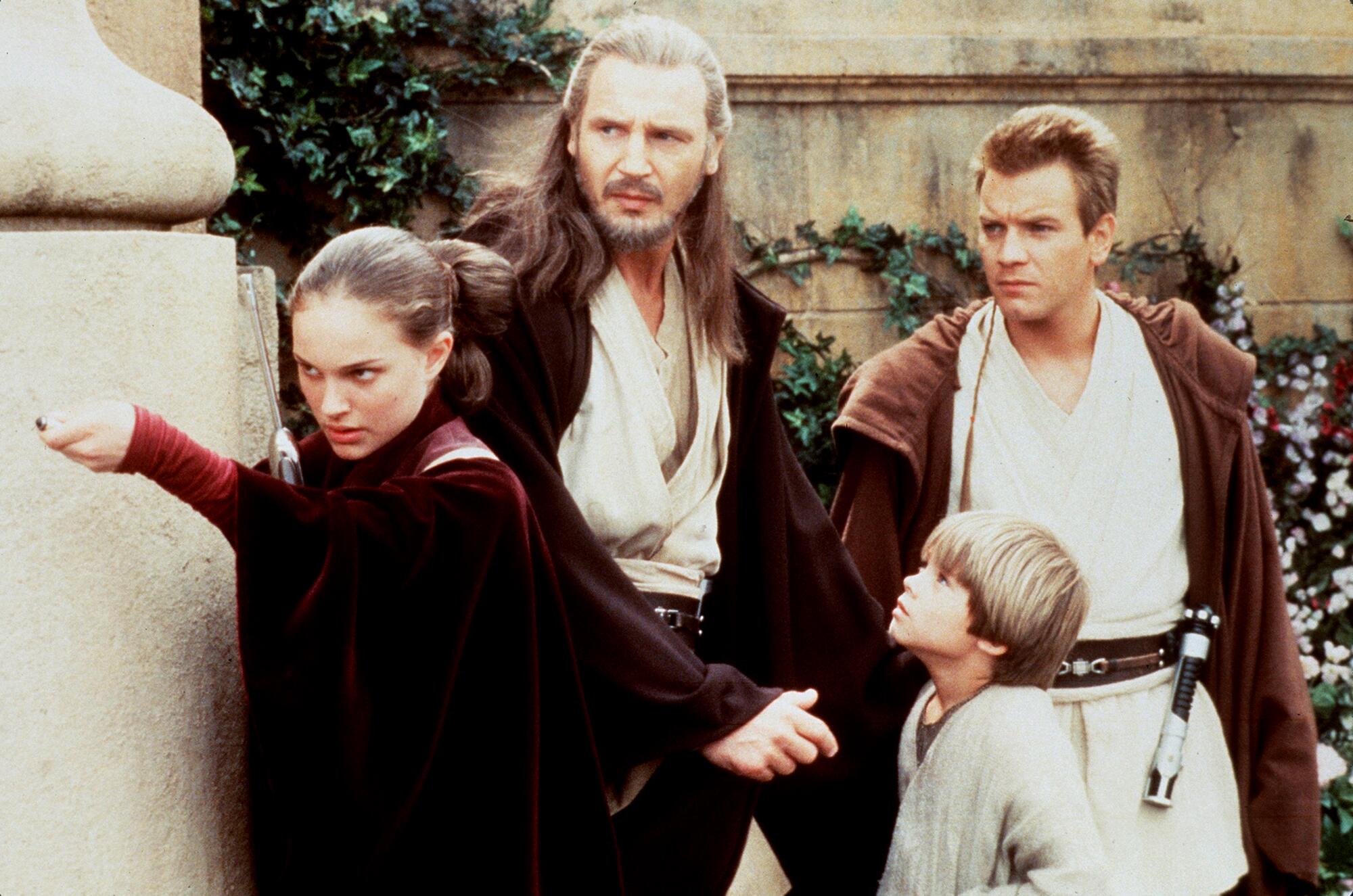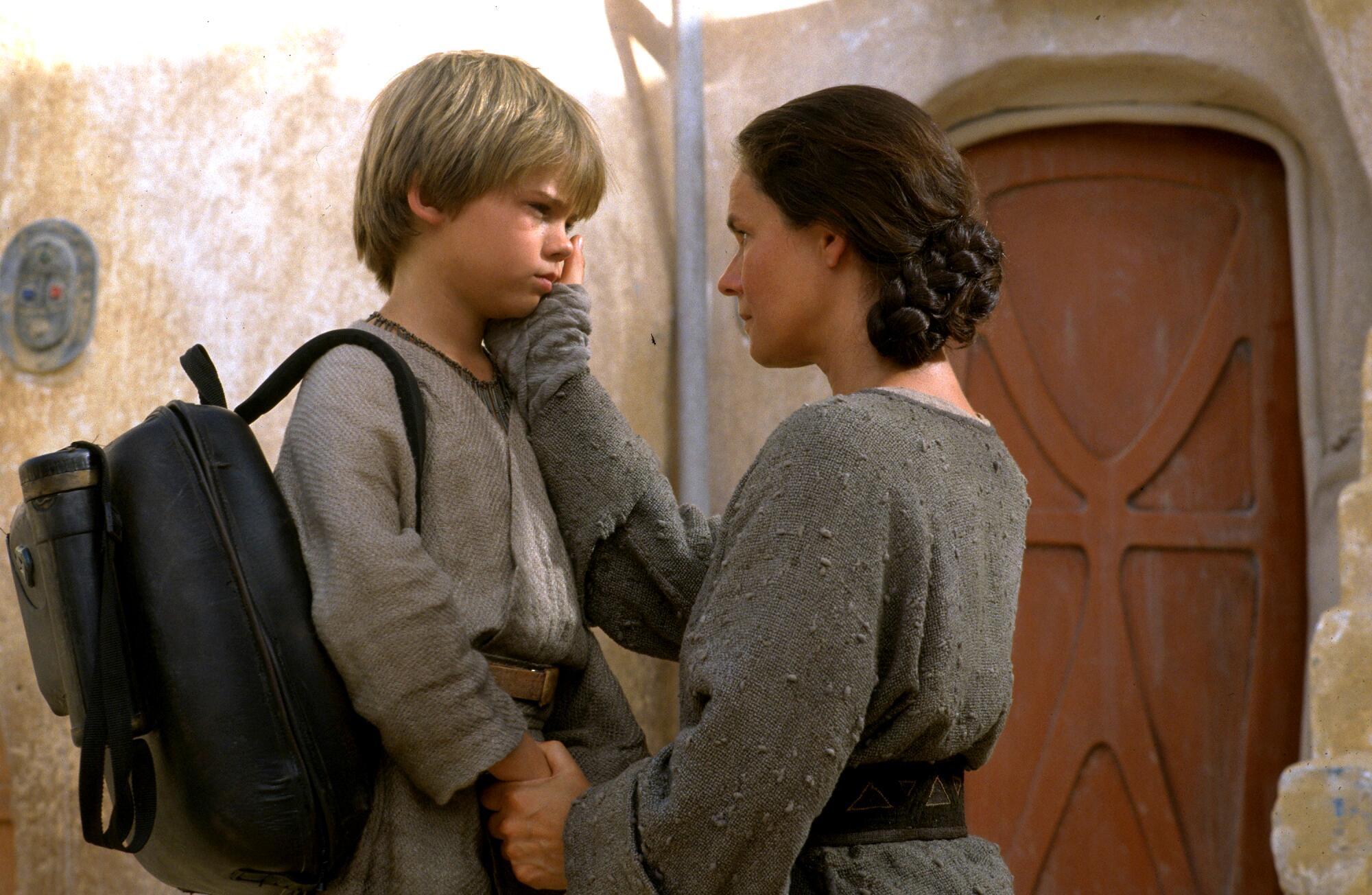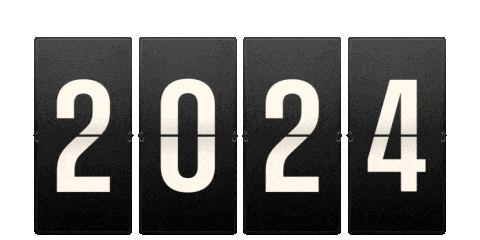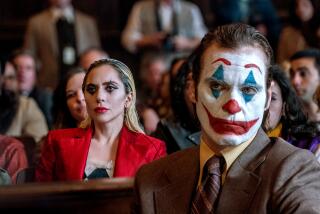Animation by Tomasz Czajka / For The Times; photographs from Lucasfilm Ltd., Disney+ and Cartoon Network
- Share via
May 19, 1999, in a galaxy not so far away ...
Excitement for “Star Wars” is at an all-time high. The first new film in the beloved series that originally concluded with 1983’s “Return of the Jedi” is about to be released in 2,970 theaters, with a majority starting their first screenings just after midnight. (Ticket sales opened just the week before.)
Audiences have had 16 long years to dream about what George Lucas has conjured up for this new cinematic adventure. But instead of whatever they’d imagined, “Star Wars: Episode I — The Phantom Menace” involves a nefarious trade dispute, myth-altering midi-chlorians and Jar Jar Binks.
The 1999 Project
All year we’ll be marking the 25th anniversary of pop culture milestones that remade the world as we knew it then and created the world we live in now. Welcome to The 1999 Project, from the Los Angeles Times.
And although it becomes, for a while, the second-highest grossing film of all time, the divisive new chapter gains a reputation as one of the worst “Star Wars” movies ever.
Today, “The Phantom Menace” returns to theaters in celebration of its 25th anniversary. In the 19 years since 2005‘s “Star Wars: Episode III — Revenge of the Sith,” the much maligned prequel trilogy has, in many ways, been redeemed.
Just look at how its stars — including Ewan McGregor, Hayden Christensen and Ahmed Best — have been re-embraced by fans in their returns to the franchise in television projects such as “Obi-Wan Kenobi” and “Ahsoka.” Even the actors themselves have voiced appreciation that their original films seem to be regarded more positively. Becoming “more aware of the fondness that the generation that we made the prequels for has for those films ... [has] meant a lot to me,” McGregor told NBC News in 2022.
And as the “Star Wars” franchise continues to grow, with upcoming projects including two new series, “The Acolyte” and “Skeleton Crew,” the second seasons of “Andor” and “Ahsoka” and at least two additional films, it has become increasingly apparent just how much of it is built upon a foundation laid down by the prequels. “Star Wars’” most recent successes would not exist if not for “The Phantom Menace.”

“The Phantom Menace” arrived saddled with many expectations. Audiences who grew up on “Star Wars” in theaters or on VHS tapes knew how Darth Vader’s story ended.
“The Phantom Menace” was going to show how it began, something only teased in the original films. Many fans camped outside movie theaters for weeks, just to be among the first to see it. Reports at the time mention that the line outside Westwood’s Village Theatre included about two dozen regulars ages 14 to 40 equipped with couches, recliners, beach chairs, video games and even satellite TV.
“It is only a movie,” The Times reported Lucas insisting during a press event during the lead-up to release. “We have tried hard not to let the film get over-hyped. . . . [It’s] a film for 12-year-olds . . . a Saturday-afternoon serial for children.”

Set roughly 30 years before the events of the original “Star Wars” (which was re-christened “A New Hope” in 1981 after a re-release), “The Phantom Menace” introduced audiences to a 9-year-old Anakin Skywalker (played by Jake Lloyd), a child who would eventually grow up to become Darth Vader.
Anakin’s story begins when a diplomatic mission gone awry brings Jedi Knight Qui-Gon Jinn (Liam Neeson), his apprentice Obi-Wan Kenobi (McGregor), the clumsy and, to some, cringeworthy Jar Jar Binks (Best) and young Queen Amidala (Natalie Portman) to his home planet, Tatooine.
Many critics were underwhelmed. In his review, Times film critic Kenneth Turan described the film as a “considerable letdown” but “certainly adequate.”
It’s “not going to change anyone’s life or method of worship,” wrote Turan. “It’s only a movie, and … a much less impressive one than all the accompanying genuflection would have you believe.” (Lucas, for his part, noted in advance of “Phantom’s” release that the original trilogy got “generally bad reviews” and that he expected the same this time around as well.)
What “The Phantom Menace” did have were state-of-the-art visual effects: Lucas was uninterested in revisiting “Star Wars” until the technology caught up to his vision. The film boasts the first fully computer-generated supporting character in Jar Jar Binks, and regardless of one’s opinion of the character, that is a landmark, paving the way for “The Lord of the Rings’” Gollum and the “Avatar” films.
“The Phantom Menace” also included such memorable sequences as Anakin’s podrace and a lightsaber showdown (referred to by the John Williams theme that accompanies it, the “Duel of the Fates”) between our Jedi heroes and the film’s fantastically designed villain, Darth Maul.

Still, audiences were much more vocal about the ways “The Phantom Menace” was a disappointment. Criticism of the film included concerns that certain new aliens like the Neimoidians and Gungans appeared to reflect racist tropes. (Lucasfilm rejected those claims as “absurd.”) Any thoughtful responses were drowned out by more vitriolic pushback on everything from the characters and acting to the story and execution.
It was an early glimpse into the darker side of the “Star Wars” fandom — and maybe self-entitled fandom in general. Jar Jar Binks actor Best has been candid about how the negative responses to his character led to his receiving online abuse and death threats. Such bad behavior intensified 16 years later, beginning with the release of the sequel trilogy, which saw stars John Boyega and Kelly Marie Tran becoming targets of racist backlash.
And the newer shows are arriving at a time when “anti-woke” superfans who can’t imagine a “Star Wars” galaxy (one already populated with nonhumanoid aliens) as diverse and inclusive have been increasingly emboldened to make racist and sexist remarks.
Luckily, the “Star Wars” fandom is not defined by that vocal minority.

In recent years, appreciation for “The Phantom Menace” has grown. The 2022 arrival of “Obi-Wan Kenobi,” in particular, had even skeptics reassessing the significance of the prequel trilogy.
“The nostalgia for the prequels can’t redeem those movies in full ... But they’re quotable, they’re memeable, and they’re fun to rant against and argue about and rally around,” wrote the Ringer’s Justin Charity.
Part of the reason “The Phantom Menace” has been increasingly embraced is because for a generation of fans, “Episode I” was their first “Star Wars” experience. They‘re now old enough to defend what was to them just as foundational as seeing “Star Wars” in a theater was for kids in 1977.
The prequel films have also been further recontextualized by additional storytelling. Series like the animated “Star Wars: The Clone Wars,” set in the years between the events of “Attack of the Clones” (2002) and “Revenge of the Sith,” have fleshed out the universe. Live-action shows like “The Mandalorian” and “The Book of Boba Fett” have drawn on lore established in the prequel-era stories — with success.
The “Obi-Wan Kenobi” series revisits McGregor’s version of the title character for a glimpse at how the man at the end of “Revenge of the Sith” became the one in “A New Hope” (portrayed by Alec Guinness). Concepts like cloning and even midi-chlorians, the micro-organisms with ties to the Force first mentioned in “The Phantom Menace,” have also endured: The only reason the Mandalorian and Grogu even cross paths is because the remnants of the Empire are so interested in the latter’s midi-chlorian count.

In a larger sense, even shows like “Andor” can trace their DNA to the prequels, by being unafraid to enter into what is considered canon and challenge the assumptions of what is expected of a “Star Wars” story. The franchise has increasingly become one large tapestry where new titles build upon and reframe what came before — not a collection of three classics “owned” by gatekeeping fans. And while subsequent projects do not actually change the quality of past installments, they do sometimes lead to reassessment.
“The Phantom Menace” is also a precursor — for good and ill — of today’s modern media landscape of sprawling IP and interconnected universes like the Marvel Cinematic Universe, DC Universe and even Godzilla’s Monsterverse. Lucas’ enormous box office success not only made an eventual sequel series an inevitability but it also signaled to others that there were possibilities in revisiting dormant worlds to attract new audiences.
The bar for “The Phantom Menace” was set impossibly high — not necessarily by the films of the original trilogy but the audience’s relationship with them. But “Star Wars” movies are special because of their potential to make people fall in love with storytelling just as much as the world itself.
And for a generation that grew up on the prequels, “The Phantom Menace” did just that.
More to Read
Only good movies
Get the Indie Focus newsletter, Mark Olsen's weekly guide to the world of cinema.
You may occasionally receive promotional content from the Los Angeles Times.













